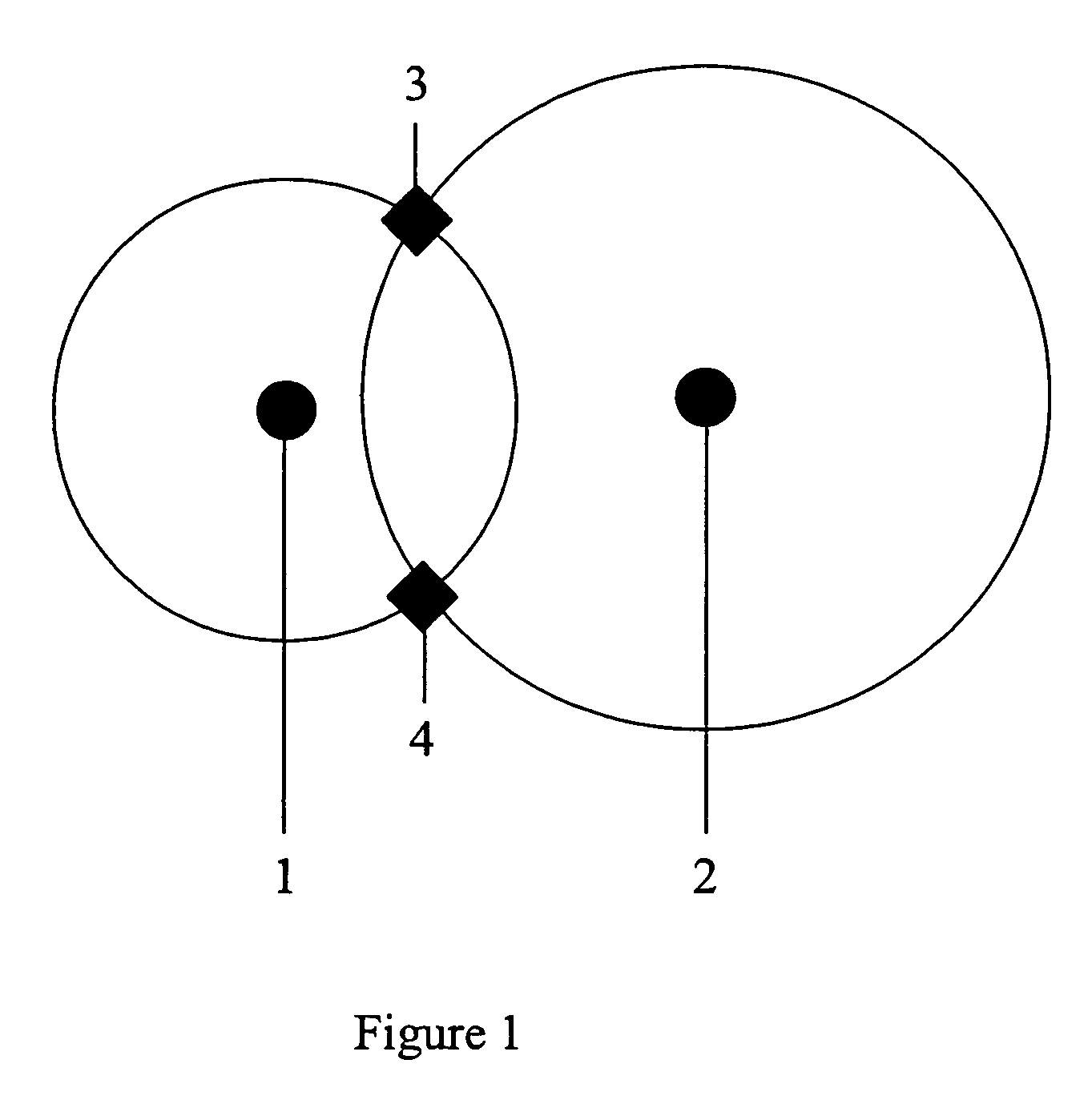Method for RF fingerprinting
a fingerprinting and mobile technology, applied in the field of mobile unit location, can solve the problems of insufficient sensitivity of the measuring device to distinguish, and limited resolution
- Summary
- Abstract
- Description
- Claims
- Application Information
AI Technical Summary
Benefits of technology
Problems solved by technology
Method used
Image
Examples
Embodiment Construction
[0034]The claimed invention is directed to location of mobile units in a wireless environment and to preparing a physical environment for location of a mobile unit. The preparation of the physical environment is referred to herein as the survey process, while the actual location of the mobile unit in the physical environment is referred to as the run-time process. In each of these processes, the claimed invention provides techniques. Some techniques are particular to the survey process, while others are particular to the run-time process, while still other techniques are relevant to both the survey process and the run-time process.
[0035]A high-level overview of the survey process used to prepare a physical environment for location determination is shown in FIG. 4. Each step is annotated with the techniques that are applied during that step in the survey process.
[0036]As shown in FIG. 4, the first step is to place transmitters 100. Typically when placing transmitters to wirelessly en...
PUM
 Login to View More
Login to View More Abstract
Description
Claims
Application Information
 Login to View More
Login to View More - R&D
- Intellectual Property
- Life Sciences
- Materials
- Tech Scout
- Unparalleled Data Quality
- Higher Quality Content
- 60% Fewer Hallucinations
Browse by: Latest US Patents, China's latest patents, Technical Efficacy Thesaurus, Application Domain, Technology Topic, Popular Technical Reports.
© 2025 PatSnap. All rights reserved.Legal|Privacy policy|Modern Slavery Act Transparency Statement|Sitemap|About US| Contact US: help@patsnap.com



